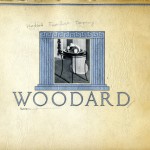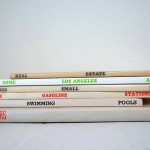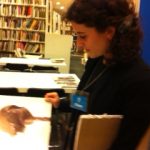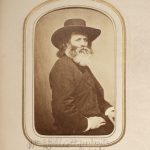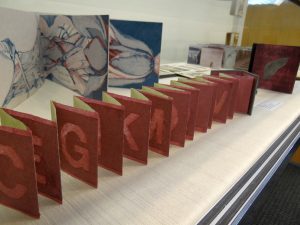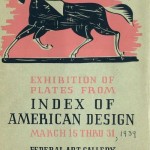
This post was written by Kate Wilson, a 2012 spring intern at the Smithsonian American Art Museum/National Portrait Gallery Library (AAPG Library).
I have background and work experience in both library and archival science – I’ve worked equally in both types of institutions and enjoy the hands-on, primary resources I find in archival work but the interaction, service, and reference I get from working in libraries. The AAPG Library’s Art & Artist File combine my love of primary documentation and reference work, and it is in this unique collection that I found a trove of original promotional materials for the short-lived Federal Art Project, the fine arts arm of the Works Project Administration.

